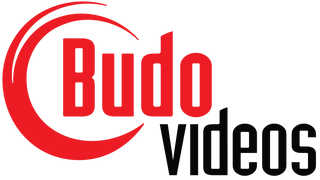
Susan Perry is a lifelong Aikido instructor, author, and former editor of one of the main Aikido publications, Aikido Today Magazine (ATM). Along with her late husband, she produced 100 issues of ATM - which are now available as a download or on DVD - and she also produced several instructional videos, which are available right here on DVD and On Demand video.
Another big project she led was the Aikido Expo series which were held in 4 different cities and featured top talent in each location. These events were recently remastered and are now available on DVD / On Demand.
1) Susan, the Aikido Expos were obviously a big undertaking. What prompted you to produce these?
When I first started Aikido Today Magazine, the Aikido world was quite fragmented; it was not organized at all and with very few resources: There was no internet, no cell phones, no books or DVDs. The large organizations that existed then did not want their students to go to other dojo. So, students had no idea of who were the Aikido sensei in their area or where dojo were. I wanted to change that. My magazine - founded for these reasons - published an annual Dojo Directory so students would know where dojo were. ATM was a non partisan international magazine so the dojo directory included dojo around the world. I wanted to make it easy for people train together because training together as we travel here and there makes Aikido stronger. I wanted to help students have some choice of where they could train. Also, with so many sensei traveling through Southern California in those times, I wanted students to be able to see and hear them, to learn new things from different teachers.
Before I offered any Expo events, ATM organized 4 Osu! Festivals with my friend Sam Combes sensei, a Yoshinkan sensei in Orange County. I took time to visit and train at the dojo of the Aikido teachers in the southern California area and then organized an event to include them all. Because the Osu! Festival was primarily about people training together, I knew I needed to do something different when I would see Personal video cameras (which were new in those days) on tripods ringing the mat. It was difficult to even get on the mat because of all the cameras. But I noticed that all the students wanted a copy of the video and, because there was more than one video, the sensei took footage of only certain parts, and the sensei didn't have duplication machines, it became a hot mess. I decided I needed to produce a video students could have and so I started organizing these Expos in different cities and I would hire a professional video crew that was local to that area to take some raw footage so that students would have a souvenir of these amazing events. I planned for a day or two of training - dividing up the time available evenly between the local teachers - and then I scheduled an afternoon or evening for the filming of the sensei demonstrating which students were invited to watch. In this way, Ron and I edited the footage to make a commemorative souvenir with with clear sound and visuals. Of course, every Expo offered in addition to this filmed demonstration by the sensei, a training time for everyone to work out with each other.
2) What led you to choose the four cities that you chose?
Basically, I knew a sensei in each of those cities who agreed to help me organize the Expo. I traveled quite a bit in those days and so I had been to Seattle many times interviewing the Aikido sensei there. Joanne Veneziano Sensei of Emerald City Aikido helped pin down Bruce Bookman sensei's dojo as a place the event could happen. I was traveling to Canada every year to spend some time with my friend, Mary Heiny Sensei, who lived there at that time. While visiting I would set up interviews with other Aikido sensei in cities nearby such as Toronto, Montreal, and Ottawa (and a few points in between). We had a lot of fun driving all over the place to interview Canadian sensei. We ended up with over 20 teachers for that Expo. A large enough space was scheduled by Fran Turner sensei in Toronto at the beautiful Toronto YMCA. I had an ATM columnist - Elizabeth Hendricks - in Portland and she and her husband at the time - Craig Fife - made it easy to plan a large venue at Ed River's Three Rivers Dojo I had become familiar with the San Diego sensei over many trips there; Bernice Tom sensei was open to having the event at her wonderful dojo. So we were able to congregate there with many wonderful Aikido sensei.
3) Looking back over you career running ATM, does anything stand out as a core memory?
Yes. I had tremendous fun throughout the 20 years of ATM. And so I have many terrific recollections. But what really comes to mind first is the ground swell of people wanting to be a part of ATM.
I had been outraged when I went to my local martial arts store one day and they asked me how the seminar was. Seminar! What seminar, I asked. Apparently there was one in Mt Baldy I hadn't heard of. But then where would I hear about it? Asking my sempai in Los Angeles that weekend, they explained that there were many Aikido organizations and if you were not a member of that organization you would not know about their offerings. I learned later that it was even worse: that if a non-organizational member showed up they would be turned away, and, that if teachers caught wind of their students going to other organization events, they were kicked out of the dojo. Hard to believe! Many things seemed wrong about this picture And so I wanted to create change. Aikido was too good to be hobbled in this way.
I decided to make a newsletter. My late husband didn't think anyone would be interested in ATM. But, I had a new Mac 128K and I bought pagemaker and then I thought I could use these tools to make an Aikido newsletter. I had to do everything, but I met incredible people everywhere who wanted to help me. My first issue was very small and I only had the addresses to the LA dojo I visited. I got a bootlegged copy of Stan Pranin's directory for dojo and hand addressed my newsletter to each one. I wanted to just give the dojo a free copy but I asked for $5 annual subscription for others. I sent them all out, hand addressed, stamped, etc. I received a mother load of mail in return and that was the beginning of ATM. I had struck a nerve and so ATM enjoyed a run of 20 years - 100 issues.

4) Do you still practice Aikido?
Yes I do. Although I closed Musubi Dojo in 2014 when my husband died, I teach under Aiko Institute, an NPO I began in 2004. I call my current dojo "Aiko Dojo" which offers classes through Claremont's City Center. Before Covid 19, we offered 4 classes a week, now - after Covid - we're lucky to be able to offer 2 classes per week. We're working on building up a larger membership. But I'm enjoying a small class. After running my own dojo for 35 years, it's a little different to be in an institutional setting but I have been embracing change! I'm grateful to be able to continue leading an Aikido class.

5) Who do you look for inspiration in the world now?
That's a hard one, actually. I've had the great honor of studying with so many impressive Aikido sensei over the years and I have learned much from so many people. But now I'm rather old myself and no longer a fan of travelling. But I am still active in many ways: I have practiced Zen Brush for about 40 years and so now I am an exhibiting member of Gallery Soho of the Pomona Valley Artists Association located just a few blocks from my home; I have continued to write articles for Aiko Institute's newsletter - the Community Well - and for the past year I have written a book - The Hidden Power of Aikido - coming out from Inner Traditions in April, 2024. But I do look to Nature everyday for Inspiration and so I spend much time in my yard.

Susan Perry can be found online at susanperry.info along with info about her new book "The Hidden Power of Aikido".



2 commenti
Great interview ⭐️⭐️⭐️⭐️⭐️
What an amazing and productive career!